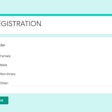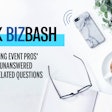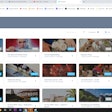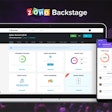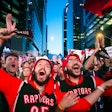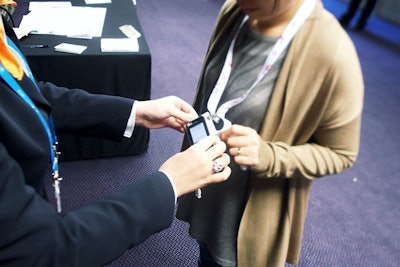
Near field communication, commonly known as N.F.C., is a form of wireless communication that is an offshoot of radio frequency identification (R.F.I.D.). The main difference is that N.F.C. is intended for close-proximity communication—no more than a few inches—either between two devices or between a device and an N.F.C.-enabled tag. Companies such as Samsung, Motorola, Nokia, and LG are offering N.F.C. technology in their products (although Apple has yet to add N.F.C. to its phones and tablets). ABI Research predicts that 285 million N.F.C.-enabled devices will ship this year. While most of the buzz about N.F.C. relates to its usage in retail and transportation, it already has started to be used in the event industry.
ITN International creates N.F.C.-based solutions for trade shows and corporate events. Since 2005, the company has created more than six million N.F.C.-enabled event badges, which it calls BCards. Founder Ivan Lazarev shared these examples of how planners are using these smart badges to increase efficiency and interaction at events.
For identification
ITN’s BCard can be made out of paper or plastic and can include sponsor logos in addition to the attendee’s name, company, and other information typically found on a name badge. The company produces them on site in about seven seconds per badge, usually at the registration counter. Each card is embedded with a microchip, known as an N.F.C. tag, which is marked with a “B” so users can easily locate the hotspot. The tag is preloaded with any information the planner wants to include—typically the attendee’s contact information, social networks, type of registration, session selections, and special event access. “The BCard is the key,” Lazarev said. "The show manager has to make the decision to offer the key. Once that key is produced, then many other services are available to show management and attendees and exhibitors."
For inventory control
For events that have materials to distribute, for example a conference bag or a gift, the BCard becomes an inventory control tool. Event staff equipped with N.F.C.-enabled smartphones can read the attendee’s badge to determine which materials to provide. The N.F.C. tag in the badge then saves a record of that communication, so if the badge is scanned again, it would indicate to staff that the attendee had already picked up materials. In addition, all of the information on the badge is stored in a cloud application, so if the attendee loses a badge it can be reissued with the information preloaded.
For attendance tracking
Planners can set up self-serve scanning outside an educational session by placing an N.F.C.-enabled phone on a pedestal and asking attendees to scan their badges. For greater control, room monitors can scan badges. If a session required preregistration, scanning would only work for those who have preregistered and that information is stored in the tag (although event staff can override the system if there is space in the room). This attendance data can be linked to a session survey, so a few minutes after the session ends the system can send an email to everyone who attended with a link to a mobile-optimized survey. The survey results would transmit immediately to show management. For sessions that offer continuing education credits, planners can indicate the minimum amount of time an attendee must spend in the room in order to qualify for credit. If anyone leaves early, staff is instructed to scan them as they leave so they do not receive credit.
For meal management
The N.F.C. tag in the attendee badge can function as a “wireless wallet,” creating a cashless payment system for meals at an event. At the North American Veterinary Conference in January, organizers loaded each attendee’s badge with $15 a day toward food. ITN placed N.F.C.-enabled phones at all meal locations within the venue and trained the cashiers on how to use them. Lazarev said the association saved money because it did not have to preorder and guarantee food minimums. Conference organizers also added a charitable component. “They told the users that if they didn’t use the money for food, they would give it to charity. So a lot of people decided to use only $5 or $10 and leave the rest for donation,” he said.
For lead retrieval
Exhibitors can capture attendees’ contact information by reading their badges (ITN will rent N.F.C.-enabled devices to those that don’t have one). The system uses a cloud-based app so exhibitors can export lead information to a database or other system. Exhibitors can also transmit information onto an attendee’s badge, which can include product information or a monetary credit that could be used at food or retail locations within the venue. Lazarev shared an example of a recent event at the Las Vegas Convention Center where exhibitors could transmit a $5 Starbucks credit onto attendees’ badges. ITN placed N.F.C.-enabled phones in the Starbucks within the convention center so attendees could scan their badge to use the credit.
For follow-up
After an event, ITN provides a trip report to attendees based on how they used their N.F.C.-enabled badge. “We track all touches and can tell them every exhibitor they visited, every session they attended, and everything they asked for information about,” Lazarev said.
Next steps
As N.F.C.-enabled phones and other devices become more common, Lazarev predicts his company will shift away from embedding tags in badges and focus on systems that function directly in the attendee’s phone. “Traditional registration solutions are going to be completely transformed in the next five years. We will no longer need traditional badges,” he said. "We will embed a badge on a phone when you register. When you go on site, you will have a bank of kiosks and you will touch a hotspot on the kiosk and it will automatically know you are checking in and the kiosk will print a paper badge as your physical identifier." All of the current uses of N.F.C. at events—lead retrieval, meal management, inventory control, etc.—would be managed by two N.F.C.-enabled phones or other devices communicating with one another.












